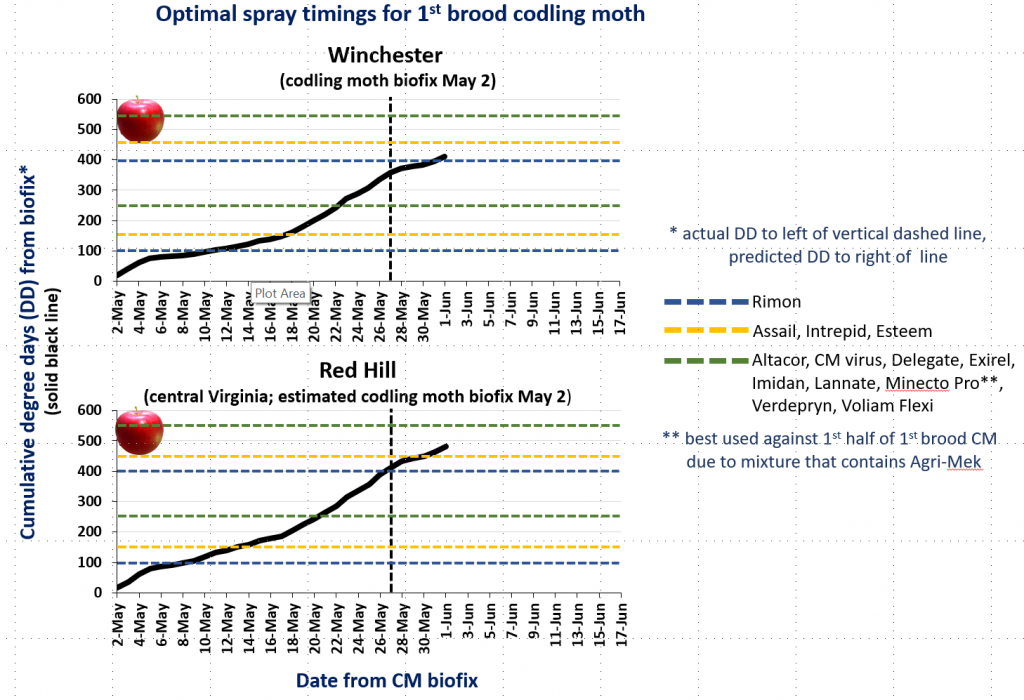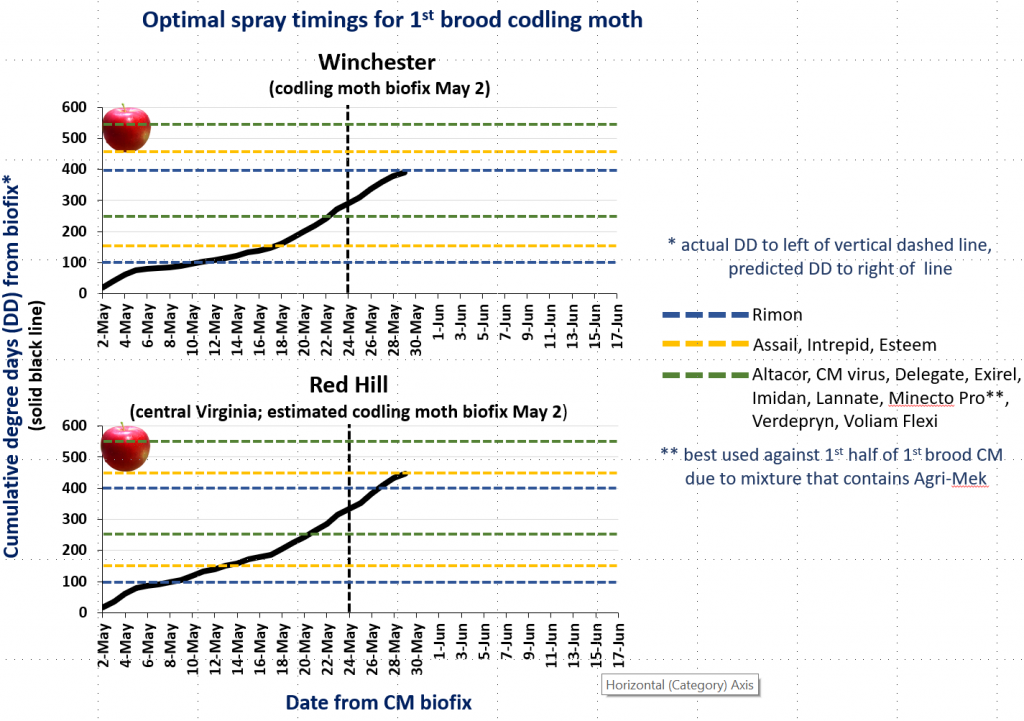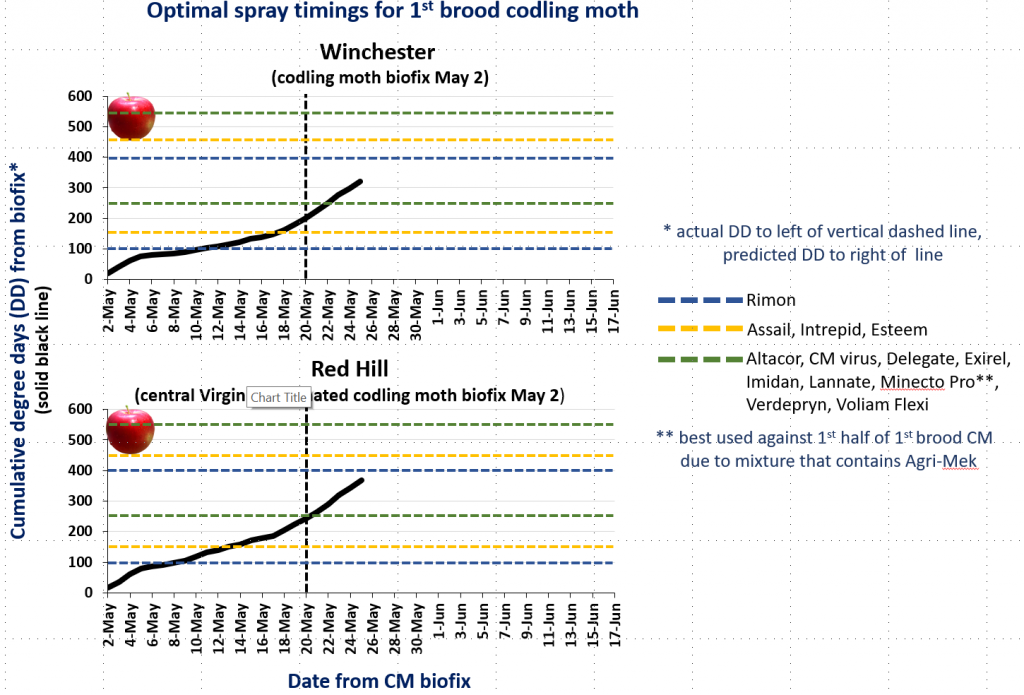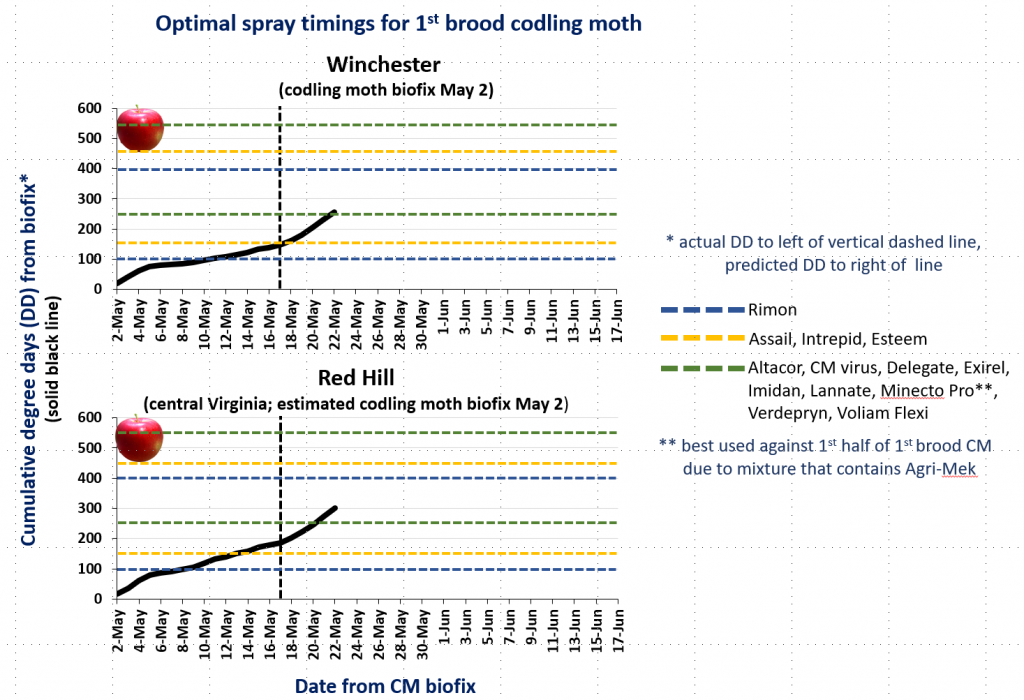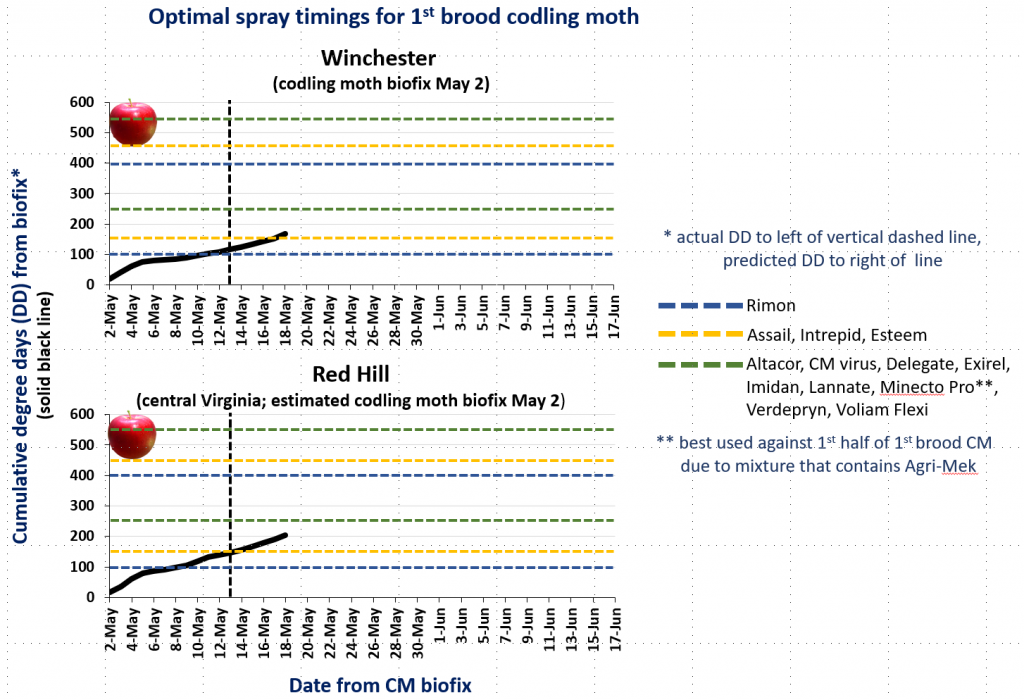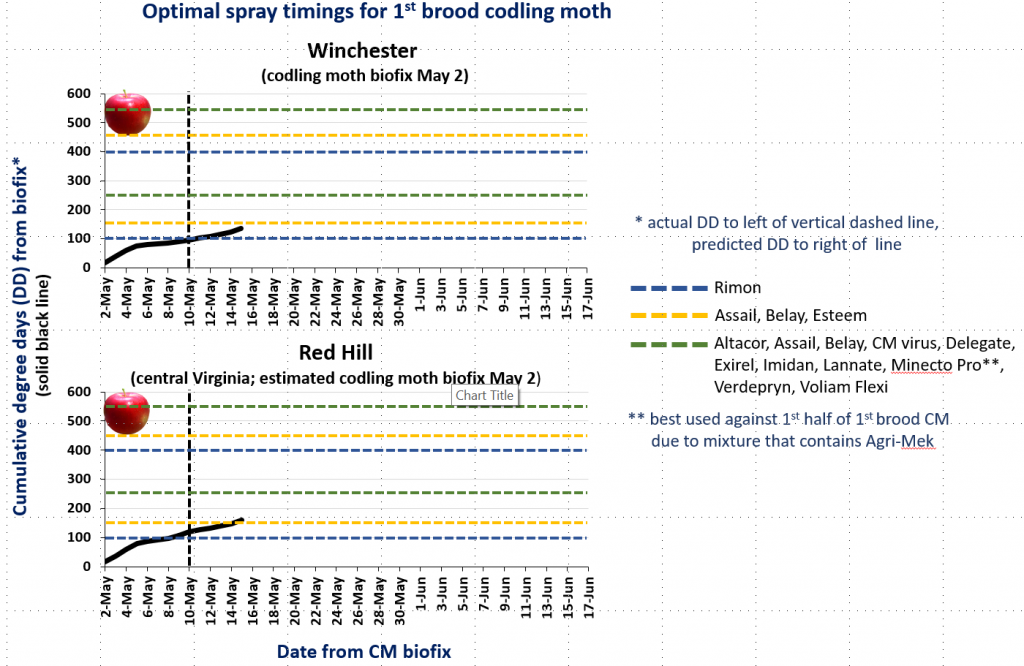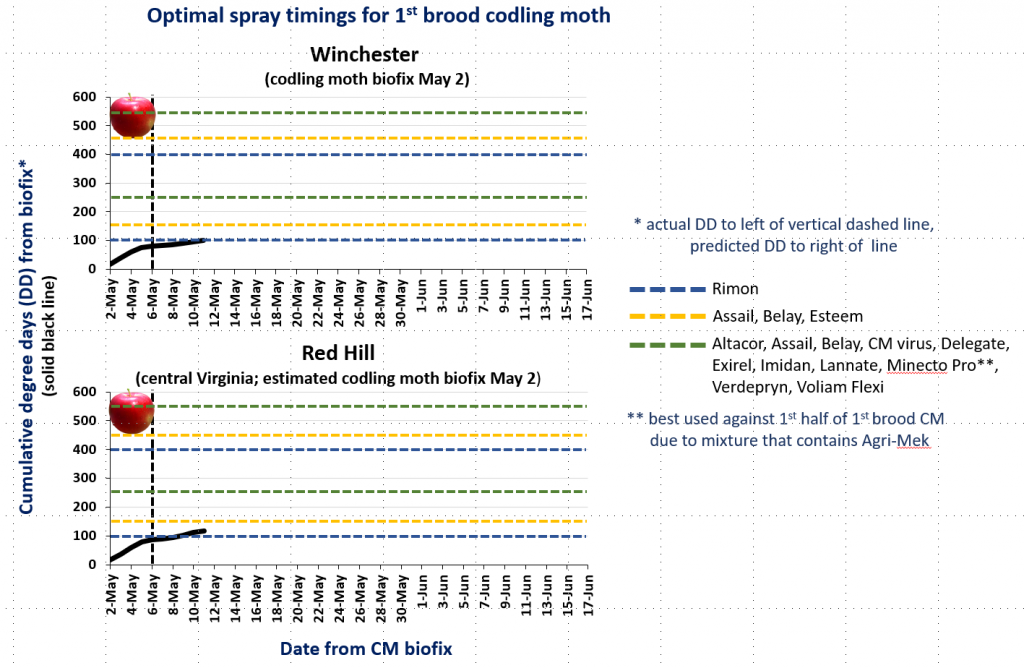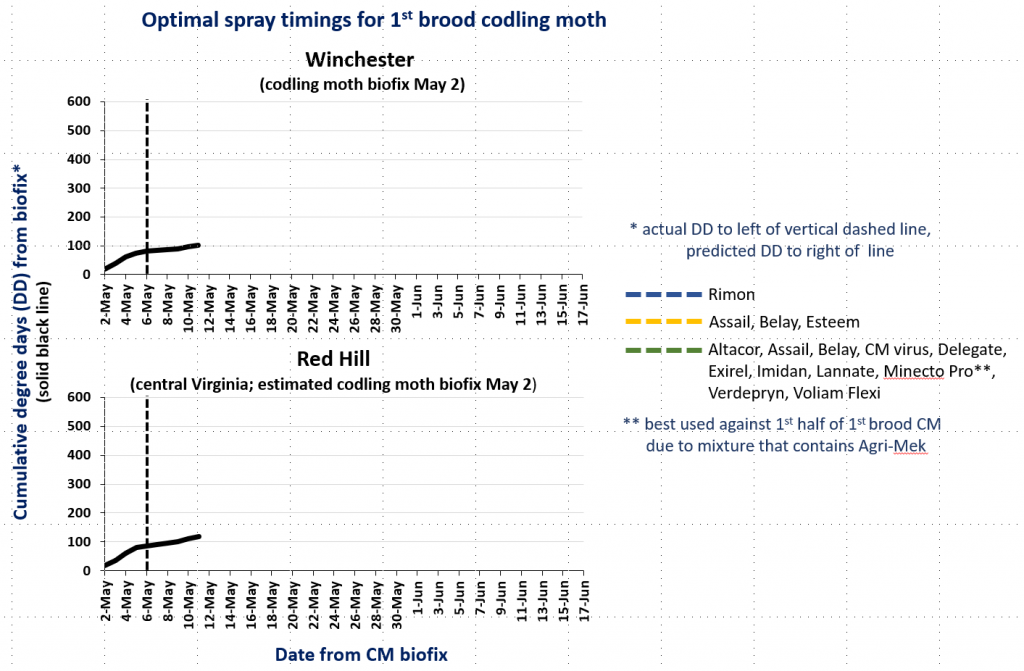Based on having followed daily cicada emergence on five sentinel trees at the Winchester AREC since May 20, I believe that we are beyond peak emergence, but that some portion of the population has yet to join the rest. We saw the the first mating pairs on May 26, with a noticeable increase on May 27. However, the unusually cool weather this weekend has pretty much stopped all cicada activity temporarily, including emergence, chorusing, and mating. I have not yet observed cicada egg-laying, although had a report on Thursday that this had been seen in Winchester. My sense is that while it’s likely that some oviposition has occurred, this is probably still uncommon and that it will begin to increase on Monday and continue at high levels through the next several weeks. In blocks requiring protection (i.e. those with a substantial portion of the canopy consisting of branches about pencil-size in diameter), the first spray would be in order this week, followed by 2-3 additional applications at 5-7 day intervals. My efficacy trials in 2004 showed that Asana and Danitol were strongest for reducing the amount of stitching from cicada egg-laying and the effects of this on branches. Both products were evaluated at the highest rate on the label (Asana at 14.5 fl oz, Danitol at 21 fl oz) and applied 3 times after egg-laying began. A cautionary note that multiple applications of these products can incite secondary pests such as woolly apple aphid, San Jose scale, and spider mites, so scouting in treated blocks after egg-laying has finished is recommended. Although Danitol is known to also have miticidal effects, these may only be short term, as it also kills mite predators.
Author Archives: Chris Bergh
CM Degree Days and Optimal Spray Timing, 5.27.21
CM Degree Days and Optimal Spray Timing, 5.24.21
CM Degree Days and Optimal Spray Timing, 5.20.21
CM Degree Days and Optimal Spray Timing, 5.17.21
CM Degree Days and Optimal Spray Timing, 5.13.21
CM Degree Days and Optimal Spray Timing, 5.10.21
CM degree day graphs revised, 5.6.21
CM Degree Days and Optimal Spray Timing
Codling moth captured at the Winchester AREC
After daily checks of our codling moth pheromone traps for the last couple of weeks, our first captures occurred during the evening of Tuesday, April 27. I anticipate that the warm days ahead will result in sustained captures, and we’ll continue to monitor this daily until biofix is set. Once that’s happened, I’ll begin twice weekly posts for degree day accumulations from biofix for and optimal spray timing recommendations for codling moth.

